
»A researcher asks for help on her trip around the world – a spark that ignites curiosity and unlocks every child’s gifts.«
Unlocking every child’s gifts
For Stefanie Trense, a primary school teacher in Berlin, inclusion is part of every day. Using differentiated teaching materials, she motivates her students to engage in inclusive experimental lessons, which are available for educators to download on the Siemens Stiftung Media Portal and the Berlin Brandenburg education server.
You teach science at a primary school in Berlin to heterogenous classes. What does that mean, exactly?
Like many schools in Berlin, the number of children in our classes with special needs is growing. These range from their learning style to their emotional and social development. My classes are among those that are quite heterogenous. On top of that, around a third of the children have difficulties with the German language.
Inclusion, then, is a normal part of your day. In your experience, what are the hallmarks of good inclusive teaching?
It means all pupils are working on the same material. Teachers need to involve all the children, get them excited for the lesson, and challenge or assist them depending on their abilities. Inclusive teaching also means that the gifted and more enthusiastic children are appropriately challenged, which involves providing them with “expert assignments,” for example. Unlocking every child’s gifts and making each student feel valued – that is inclusion.
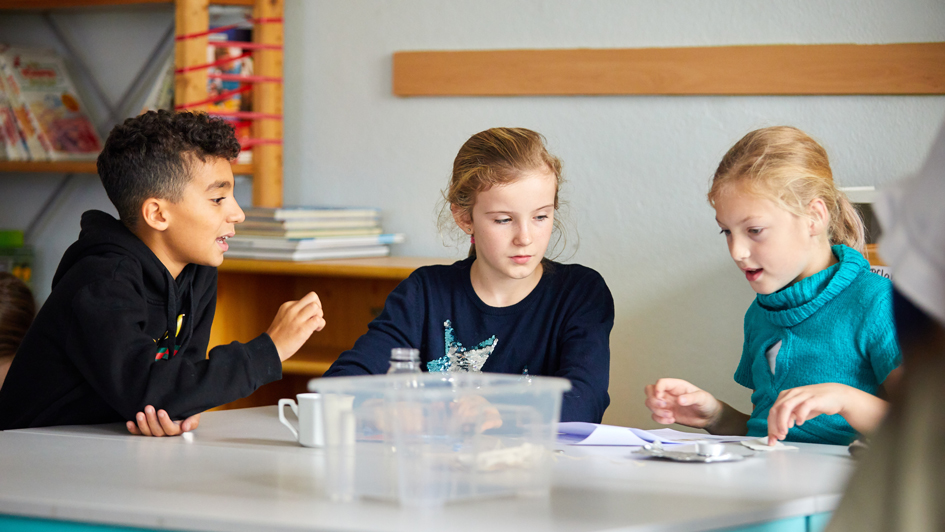
That sounds like quite a challenge...
You can’t turn a heterogeneous class into a homogeneous group. It is more about recognizing individual strengths and weaknesses and working with these accordingly. I’ll admit, it is not always easy. But when all the children feel involved on an emotional level, inclusive teaching works.
One important didactic method for inclusive teaching is differentiated teaching materials. What are these?
The great thing about differentiated teaching materials is their ability to accommodate children with varied skills and learning paces, and to address both their potential strengths and areas where they need help. We begin with a low threshold – by telling an exciting story, for example – to get the children motivated. Next, they all receive a group task: this includes both incremental hints and supplementary subtasks with a range of difficulties. At times, they are working in groups where everyone is at the same level. At other times, they are working in groups where people have different abilities.
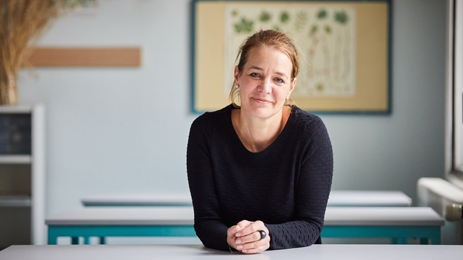
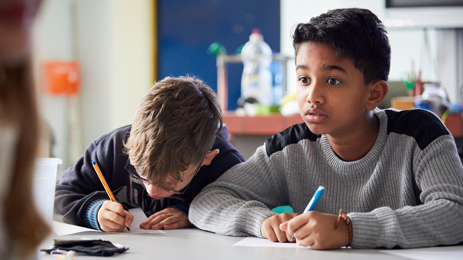
You took part in developing the differentiated teaching materials for inclusive experimental lessons that are now available for teachers to download in the Siemens Stiftung Media Portal or the Berlin Brandenburg education server.
Yes. There was a group of eight educators from Berlin, and we worked on teaching materials for fifth and sixth grade science lessons. We focused on content for the units “Everyday materials” and “Measuring by sense.” As we worked, each of us had specific pupils – with his or her strengths and weaknesses – in mind. A lot of thought and deliberation went into coming up with the specifics of what these children would need in terms of help and support to make the lesson content accessible for everyone. Our personal experiences played a big part in developing these materials.
How do the lessons work? Let’s use “Everyday materials” as an example.
At the beginning of the “Material properties – a research expedition” unit, we tell the children that a friendly oceanographer has written an email to the class and asked for help on her journey around the world aboard the research vessel “Beagle.” Before her departure, there was a mix up with some of the items she wanted to take along, and the children are asked to help sort things out. Next, the children are given a box with samples of different materials, such as twine, wire, leather, a marble, etc. The children work in groups to sort these materials for the oceanographer according to certain criteria. Cards with incremental hints help the children along in the thought process. At the end, the children present their findings. They receive language assistance at this point, too.
You seem quite sold on these units. What is the key to success in working with these materials?
It took a while for me to get used to the story at the beginning, but now I’m all about it after seeing how well it works! With the story, the children take ownership of the subject matter. By giving them their own project, they have a sense of responsibility. They realize they can come up with their own ideas and set them in motion. This gets all the children involved, excited, and motivated, regardless of ability.
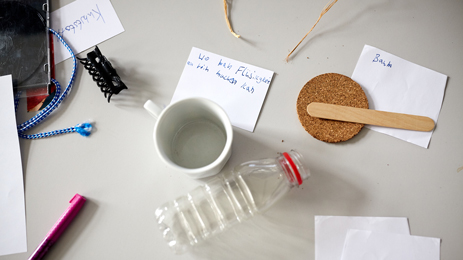
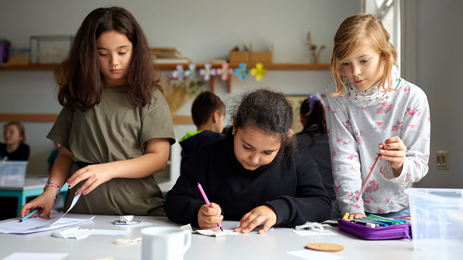
Does this type of teaching really reach every child – even those who tend not to participate?
The children really do all work enthusiastically on the group assignment, even the ones who might be in the middle of puberty and don’t generally show much motivation. One of my most difficult pupils came to school ill one day and said: “We have science today and will probably have to help the oceanographer again! I didn’t want to miss that.” Some children even wrote to the researcher and told her how much fun it was to help her. That really warmed my heart!
Do the differentiated teaching materials have any other benefits?
The lessons are methodically varied. Part of it sees the children learning scientific methods such as collecting, comparing, and categorizing. But they also learn how to conduct experiments: they plan each experiment themselves and record the results. Plus, there is the cooperative work of creating posters and presentations. In all these tasks, the learners are taking responsibility for themselves and the group. They are learning the ability to compromise, to work in a team, and to be tolerant. This is how we promote important values alongside discovery-based learning.
Is there a downside?
For the most part, the lessons work well. We cover all the content included in Berlin’s framework curriculum for fifth grade on the subject of “materials.” For someone using the materials for the first time, there is quite a bit of time involved to get everything prepared.
How so? The materials are ready for download as Open Educational Resources (OER) in the Siemens Stiftung Media Portal and the Berlin Brandenburg education server...
That’s true – and the fact that they can be downloaded as OER is a huge advantage because teachers can change the materials as they see fit to meet their classroom needs. Most of the work stems from gathering the experiment materials and creating the hint cards with their increasing levels of assistance. During the lessons, my role is to observe the children as they work and provide individual help as needed – and to simply enjoy the lesson as it unfolds.
The materials for download
You want to use the inclusive experimentation units in class? In our Media Portal you will find the packages for “Material properties”, “Environment“, “Energy” and “Health“.
As we wrap up, can you share some parting words for successful inclusive teaching?
For me, inclusion is a matter of attitude. I do not give a child with special educational needs a completely different task – I give him or her the same task as the rest of the class, just in a different form. Any child that makes an effort to do his or her part is deserving of praise.
We wish you all the best with your plans! Thanks very much for the interview.
January 2020
Ursula Gentili
+49 172 7683044


